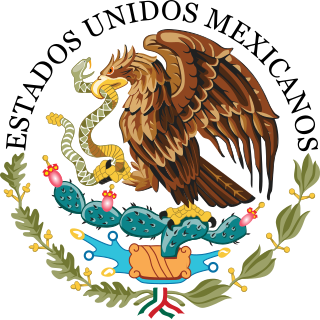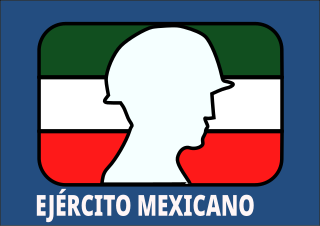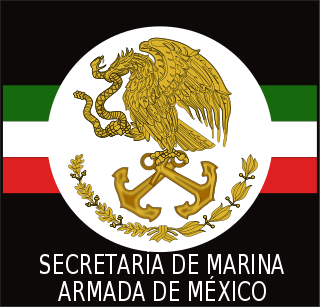
In military organizations, a colour guard is a detachment of soldiers assigned to the protection of regimental colours. This duty is so prestigious that the colour is generally carried by a young officer (Ensign), while experienced non-commissioned officers are assigned to the protection of the flag. These NCOs, accompanied sometimes by warrant officers, can be ceremonially armed with either sabres or rifles to protect the colour. Colour guards are generally dismounted, but there are also mounted colour guard formations as well.
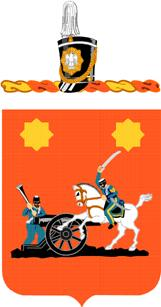
The 2nd Cavalry Regiment, also known as the 2nd Dragoons, is an active Stryker infantry and cavalry regiment of the United States Army. The Second Cavalry Regiment is a unit of the United States Army Europe, with its garrison at the Rose Barracks in Vilseck, Germany. It can trace its lineage back to the early part of the 19th century.

The term used to refer to all ranks below officers is "other ranks". It includes warrant officers, non-commissioned officers ("NCOs") and ordinary soldiers with the rank of private or regimental equivalent. Officers may, in speaking, distinguish themselves from those "in the ranks".
"Reveille" is a bugle call, trumpet call, drum, fife-and-drum or pipes call most often associated with the military and prisons; it is chiefly used to wake military personnel and prisoners at sunrise. The name comes from réveille, the French word for "wake up".
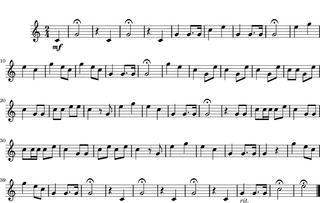
The "Last Post" is either a B♭ bugle call, primarily within British infantry and Australian infantry regiments, or an E♭ cavalry trumpet call in British cavalry and Royal Regiment of Artillery, and is used at Commonwealth military funerals, and ceremonies commemorating those who have been killed in war. Its duration varies typically from a little over one minute to nearly three minutes. For ceremonial use, the Last Post is often followed by "The Rouse", or less usually the longer "Reveille".

Beating Retreat is a military ceremony dating to 16th century England and was first used to recall nearby patrolling units to their castle.
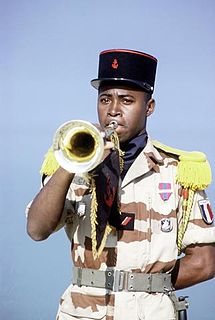
A bugle call is a short tune, originating as a military signal announcing scheduled and certain non-scheduled events on a military installation, battlefield, or ship. Historically, bugles, drums, and other loud musical instruments were used for clear communication in the noise and confusion of a battlefield. Naval bugle calls were also used to command the crew of many warships.

The 3rd Cavalry Regiment, formerly 3rd Armored Cavalry Regiment is a regiment of the United States Army currently stationed at Fort Hood, Texas.

A corps of drums is a musical unit of several national armies. Drummers were originally established in European armies to act as signallers. This is the major historical distinction between a military band and a corps of drums, 'drummers' would not play their instruments to entertain or delight, but rather as a utilitarian battlefield role. This role was fulfilled by trumpeters or buglers and timpanists in the cavalry and the artillery, who did not form into comparative formed bodies in the way that drummers did; therefore, an orthodox corps of drums will exist in the infantry arm and not in other arms.

The Regiment of Mounted Grenadiers is the name of two Argentine Army regiments of two different time periods: a historic regiment that operated from 1812 to 1826, and a modern cavalry unit that was organized in 1903.
The first Regiment of Mounted Grenadiers, formed in 1812, fought in the Argentine War of Independence under José de San Martín, and the Cisplatine War, subsequently becoming the Presidential bodyguard in 1825. Refusing to replenish its membership with soldiers who had not fought in the Argentine War of Independence, the regiment disbanded in 1826.

The 116th Cavalry Brigade Combat Team is the largest formation of the Idaho Army National Guard. It is headquartered at Gowen Field, Boise, Idaho. It has been reorganized into a Armored Brigade Combat Team (ABCT) but remains the only unit to be designated a “Cavalry Brigade Combat Team” by special appointment of the US Army. The 116th Cavalry Brigade Combat Team has units located throughout Idaho, Montana, Oregon, and Nevada. It was reorganized into a heavy armor brigade in 1989. Often referred to as the Snake River Brigade and formerly known as the 116th Armored Cavalry Regiment, the unit includes about 3,000 citizen-soldiers from Idaho.

A fanfare band, fanfare corps, fanfare battery, fanfare team, horn and drum corps, bugle band, drum and bugle corps, or trumpet and drum band is a military or civilian musical ensemble composed of percussion instruments, bugles, natural horns and natural trumpets. Fanfare bands are the descendants of the old medieval trumpet and drum teams that sounded fanfares on important occasions and are related to drum and bugle corps internationally.

On July 29 every year, the Great Military Parade of Peru celebrating the anniversary of Peru's declaration of independence from Spain in 1821 is held in Lima, the national capital, by members of the Peruvian Armed Forces and the National Police of Peru and is presided over by the President of Peru and his First Family, members of the Council of Ministers of Peru and the Congress of the Republic of Peru, other civil officials, ecclesiastical leaders, the Diplomatic Corps of Peru, and other invited guests, among them commanders and other officers and personnel of the Armed Forces and the National Police.
The Thai Royal Guards parade, also known as Trooping the Colour, occurs every December 2 since 1953, in celebration of the birthday of the King of Thailand, during which the King's Guard of the Royal Thai Armed Forces perform a military parade and pledge loyalty to the monarch. The venue is the Royal Plaza at Bangkok, Thailand, in front of the Dusit Palace and its Ananta Samakhom Throne Hall.

The 16 September military parade in honour of the anniversary of Mexican Independence is an annual tradition dating back to the late 19th century and the beginning of the professionalisation of the Mexican Armed Forces in the 20th century. Held yearly in the Zócalo in Mexico City, this parade, the largest of the various parades held simultaneously nationwide on September 16, Mexican Independence Day, is presided by the President of Mexico in the fulfillment of his duty as the Supreme Commander of the Armed Forces. It is also attended by members of the Cabinet of Mexico, the Congress of the Union, civil service employees, the Secretaries of National Defense and Navy, members of the Mexican Armed Forces and Federal Police, uniformed service veterans, the state diplomatic corps, delegations representing the religious sector, indigenous peoples, sports and the private sector, and the general public. Seen on TV and the Internet and heard on radio, this is one of the biggest events of the year. Taking part in this are members of the Mexican Armed Forces and the Federal Police.

For more than a century the Military Parade of Chile or Great Military Parade of Chile has been a tradition within the Independence Day holidays in Chile. It is held in Santiago, Chile's O'Higgins Park on September 19 yearly in honor of the Glories of the Chilean Army with a military parade involving not just the ground forces but by the rest of the Chilean Armed Forces: the Chilean Navy, the Chilean Air Force, and the Carabineros de Chile. It is also in honor of the anniversary of the formal inauguration on that day in 1810 of the First Government Junta, which witnessed the first military parade of the independent nation at the Plaza de Armas, Santiago. It is the final act of the national independence celebrations, which are broadcast through TV and the Internet and radio.

A fanfare trumpet is a brass instrument similar to but longer than a trumpet, capable of playing specially composed fanfares. Its extra length can also accommodate a small ceremonial banner that can be mounted on it.

A Mounted band is a military or civilian musical ensemble composed of musician playing their instruments while being mounted on an animal. The instrumentation of these bands are limited, with the musician having to play his/her instrument, as well as steer the animal to the designated location. Most mounted bands therefore use instruments that can easily be held, such as bugles, horns, and Fanfare trumpets. Timpani and glockenspiels are also a common feature, usually located at the head of a band. Although a band that is mounted on any member of the Equidae and Camelidae family are considered to be a mounted band, horses are the most common animal used in mounted bands, mostly being employed in military bands in Europe, North and South America, and some parts of Asia.

The Caracas 5th of July military parade is the national civil-military parade that serves as the major highlight of Independence Day celebrations in Venezuela. It is celebrated in the national capital, Caracas, on July 5. The parade, an annual tradition that began in 1953, is held in the capital's Fort Tiuna district, which serves as the headquarters of the National Bolivarian Armed Forces and houses the offices of the Ministry of Defense. The parade is one of the largest in the Americas. The parade's guest of honor is the President in his/her constitutional duty as Commander in Chief of the National Bolivarian Armed Forces, and many state officials attend the event which is broadcast live on Venezolana de Televisión and simulcast on all private and public television stations.

